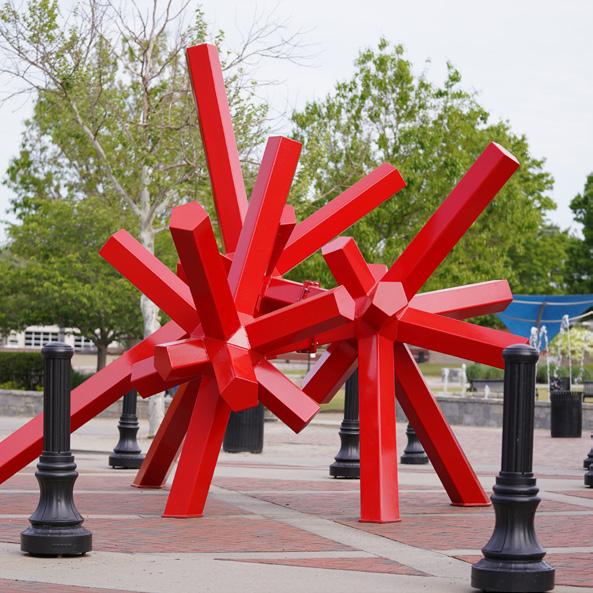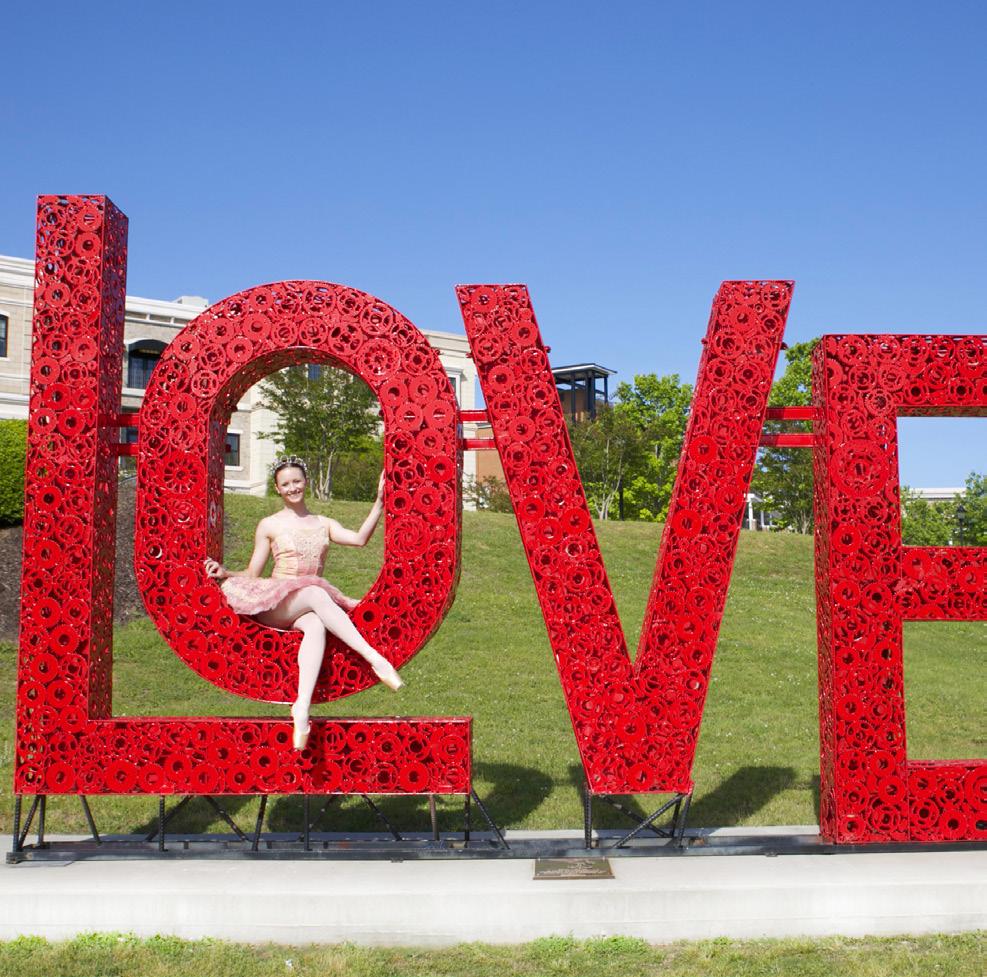
3 minute read
DOWNTOWN DEVELOPMENTS DOWNTOWNS PARTNER WITH LOCAL ARTISTS TO CREATE VIBRANT COMMUNITIES
BY TINA LILLY, EXECUTIVE DIRECTOR, GEORGIA COUNCIL FOR THE ARTS
MANY COMMUNITIES AND DOWNTOWNS across the country are discovering that one of the best ways to create a vibrant, thriving environment as well as address community challenges is to utilize artists. Most people are aware of the impact of concerts, arts festivals, and murals, but cities across the country have looked to artists and creatives to help solve problems with traffic, empty storefronts, safety and numerous other issues.
Advertisement
Arts And The Economy
Arts are a major component of our state’s economy. Arts and cultural production in Georgia accounts for $29.2 billion and 4.2% of the Georgia economy, contributing 149,036 jobs. And these figures only account for direct spending. Additionally, in 2015, Americans for the Arts found that attendees at arts events spend an average of $31 per person on top of ticket sales, while non-local attendees spend an average of $47 on everything from food and beverages to gas and overnight stays. Developing the arts economy in a downtown is a way to bring this money to your city as well as to tackle roadblocks to community and economic development.
City Streets As A Canvas For Artists
Concerned about traffic and safety issues? The arts can help! The Asphalt Art Safety Study, conducted by Sam Schwartz Consulting in partnership with Bloomberg Philanthropies, found that city streets with asphalt art became considerably safer for pedestrians after incorporating art into roadway redesigns. For example, the rate of car crashes involving pedestrians decreased by 50% in areas that had added artwork to their crosswalks, sidewalks or underpasses. Bloomberg Philanthropies has results of this study, how-to guides, and even a grant program to support asphalt art at asphaltart.bloomberg.org. The city of Atlanta utilized this grant to create a safe walking lane for the Adams Park community.
Arts Reinvigorating Empty Buildings
Empty storefronts have prompted several cities to look to artists for assistance. In Miami, the Arts and Business Council used empty storefronts to create a pop-up arts festival with visual art installations in each space. A nonprofit organization in Akron, Ohio, curates art displays in windows of empty buildings to attract redevelopment. Paducah, Kentucky offers incentives for artists to take over dilapidated spaces, including moving costs and start-up business assistance, which had led to more than $30 million dollars in investment in this town renowned for its arts community. Paducah, a town of 26,000, is responsible for $273 million in tourism spending in the county from 2.4 million visitors annually.
Improving Safety Utilizing The Arts
There are quite a few examples of cities utilizing artists to improve the safety of a community. In Birmingham, rainbow-colored lights transformed dark train underpasses into inviting paths that are now a draw to downtown. While simple lighting could have provided brighter walkways, the choice to use an artist’s work transformed the walkways into their own destination. The city of Alameda, California, utilized local artists to plan a series of events called Eden Night Live. This festival featuring local vendors attracted people to their city, but it also served as a venue to develop positive police-community relations as city deputies attended and interacted with residents.
As a result of Eden Night Live, deputies felt community members knew them better and interacted with them more.
Increasing Tourism With Unique Arts
Of course, the arts can help in more straightforward ways as well by attracting tourists and activating idle parts of downtown. In Georgia, the city of Suwanee brings in temporary, large-scale sculpture every two years for SculpTour. Visitors follow a walking trail which takes them around downtown to see all of the pieces. The city of Hapeville used attractive murals to activate the alley behind downtown businesses. They also used a shipping container to create an art gallery. So now, instead of a dark and unused alley, downtown includes a vibrant event space.
Georgia Council For The Arts Supports Cities
While conceiving of projects involving artists may be a new endeavor for a community, Georgia Council for the Arts (GCA) offers different types of support to assist cities with arts projects:

• Grants are available to city governments and nonprofit organizations for arts projects such as murals, art exhibits, concerts, festivals, performances, etc.
• GCA Cultural Facilities Grants will also cover capital projects or the acquisition of an arts facility.
• GCA staff members are available to answer questions, such as where to find artists, or providing examples of other cities that have done similar projects.
• GCA staff members can meet with, or prepare presentations for, city officials on creative placemaking, public art, grants, or any other arts-related topic.
• GCA staff can discuss additional arts funders and preview your applications to those funders. Cities should save a seat at the table for local artists and arts organizations in order to develop creative solutions to any numbers of challenges.










